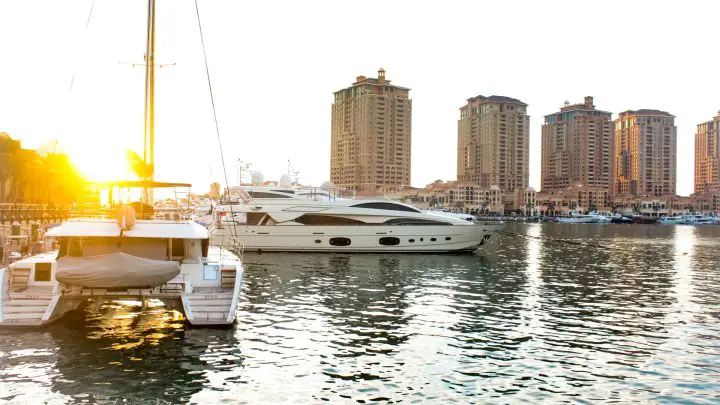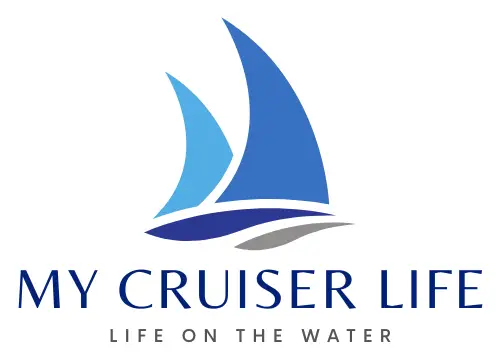Pontoon lifting strakes are channels that create lift under your hull, cutting through water drag so you can get on plane way easier. These things redirect water flow to help your boat jump up faster, even when you’re loaded down with people and gear, plus you’ll burn less gas doing it. Real boat owners see noticeable improvements in getting up to speed and hitting higher top speeds, though every boat’s different. You’re looking at anywhere from $500-2000 to get them installed, but most folks say it bumps up their boat’s value. Pontoon lifting strakes won’t magically turn your pontoon into a rocket ship, but they fix those annoying problems like taking forever to get moving and guzzling fuel.

Table of Contents
- How Lifting Strakes Work
- Installation Overview
- Performance Testing
- Manufacturer Insights
- Conclusion + Recommendations
- Strakes Worth Their Weight in Speed
- FAQs – Pontoon Lifting Strakes
How Lifting Strakes Work
When you’re out on the water, wondering why some pontoons seem to effortlessly skim across the surface while others plow through like they’re fighting the lake itself, you’re witnessing the fascinating world of hydrodynamics in action. Lifting strakes are aluminum rods welded along the length of the pontoons to divert the water’s drag force, raising the angle of the pontoon log,s improving hydrodynamics by reducing drag.
Think of lifting strakes as underwater wings that follow many of the same principles that keep airplanes in the sky. When in use, these strakes help to lift the boat out of the water, reducing drag and increasing speed by forcing water down under the tubes as the boat moves forward. The magic happens when water hits these angled fins at the right speed, creating what’s called a planing surface.
The flow of water underneath the pontoons creates lift, with some flow going downward and some upward. Lifting strakes help align the downward flow with the upward flow, creating lift that pushes the boat upward. The strake angle is critical – too steep and you’ll create too much lift at the stern, causing the bow to plow. Too shallow and you won’t get enough lift to make a difference.
Without strakes, a pontoon is a displacement hull that plows through the water instead of over it. With strakes, a pontoon becomes a planing hull; it moves over the top of the water instead of through it, transforming your boat’s entire performance profile.
Types of Lifting Strakes
When you’re ready to upgrade your pontoon’s performance, understanding the different types of lifting strakes available becomes crucial for making the right choice. Lifting strakes are commonly made from durable materials like aluminum or stainless steel, chosen for their corrosion resistance and strength.
Material Choices: Aluminum vs. Stainless Steel
Aluminum is the most popular choice due to its lightweight nature, which minimizes additional weight on the boat, preserving fuel efficiency while still providing significant performance enhancements. Think of aluminum strakes as the sweet spot between performance and practicality – they won’t weigh down your pontoon like an anchor dragging behind you. Stainless steel, though heavier, offers superior durability, especially in saltwater environments where corrosion is a concern.
Installation Methods: Welded vs. Bolt-On Systems
If the hulls are made out of steel/aluminum, the strakes are fabricated separately and welded onto the bottom surface. Welded strakes become part of your pontoon’s DNA, providing the cleanest hydrodynamic profile. However, many strakes have resulted in leaking pontoons on the welds, and these modifications can get complicated.
Bolt-on systems offer flexibility that welded strakes can’t match. The Pontoon Water Glide takes about 3 hours to install and does not require any welding or difficult installation methods.
Angle Variations and Hydrodynamic Design
Strakes can have a negative angle (which provides stability and lift but at times results in a harder ride over waves) or a positive angle (which allows for a softer ride while still providing lift). Strakes come in different shapes and sizes, including rectangular, triangular, and angled designs.
Related: Catamaran vs Pontoon
Installation Overview
Installing lifting strakes isn’t like changing your oil – it’s more like performing surgery on something that keeps you from swimming with the fishes.
Lifting strakes also require a professional installation since the boat has to be lifted off the trailer, and since the strakes have to be welded onto the boat. While DIY installation is possible, you need to have some knowledge and experience in boat mechanics. Unless you’ve got serious welding chops and the right gear, this job’s calling for a professional.
Here’s the reality check – many strakes have resulted in leaking toons on the welds, and that’s not exactly the kind of surprise you want discovering mid-lake. Professional welders understand that pontoons need specific techniques because you’re working with pressurized chambers.
The installation tools required go beyond your basic garage setup. We’re talking TIG or MIG welders capable of handling marine-grade aluminum, specialized positioning equipment, and pressure testing gear. Aluminum requires specific welding tools, such as a MIG or TIG welder, and most weekend warriors don’t have this equipment sitting around.
A qualified marine mechanic brings the experience to pressure test your pontoons after installation and knows proper strake alignment for optimal performance.
Performance Testing
Here’s what GPS testing reveals when boats go head-to-head:
- Speed gains aren’t just wishful thinking – One pontoon boat owner, Bob, reported that after installing lifting strakes on his pontoon boat, he noticed a significant increase in speed and fuel efficiency. Before the installation, his boat struggled to get up to 22 mph and burned through fuel quickly. With the addition of lifting strakes, his boat now reaches a top speed of 28 mph and uses significantly less fuel. That’s a solid 6 mph gain – enough to transform weekend cruising from a leisurely float to legitimate water sports territory.
- RPM metrics tell the efficiency story – The blue lifting strake version reached 6100 RPMs at a top speed of 23.5 miles per hour during controlled testing between identical pontoons. While you’re working the engine harder at top speed, the real magic happens at cruising RPM, where strakes help your pontoon plane more efficiently.
- The 15% performance bump is real – I would estimate that I improved the performance of my pontoon by about 15% once the lifting strakes were fitted, reported one owner who documented his before-and-after experience. They can increase your top speed by 10–15% and make it much easier to pull tubes and skiers behind you.
- Fuel usage logs show consistent savings – Lifting strakes help the boat ride on top of the water’s surface, reducing drag and improving efficiency. Think of it this way: when your pontoon rides on top of the water instead of plowing through it like a bulldozer, your engine doesn’t have to work nearly as hard to maintain cruising speed, translating into noticeable fuel savings over a full day on the water.
Manufacturer Insights
What Major Brands Say
The pontoon industry’s heavy hitters aren’t just slapping aluminum fins under their boats and calling it a day – they’ve got a serious engineering philosophy behind their lifting strake designs. When you dig into what Bennington, Manitou, and Godfrey are doing with their OEM lifting strakes, you’ll find three distinct approaches that reveal how much brand insights matter.
Bennington
Bennington takes a surgical approach, recommending lifting strakes “for engines rated 115hp or greater and for boats exceeding 30 mph” with promises of adding “as much as 4.8 miles per hour.” Their boat builders engineer multiple performance packages where lifting strakes work with patented elliptical center tubes and performance foils, creating systems that rival fiberglass sport boats. They treat each strake placement like a calculated chess move rather than a default option.
Godfrey
Godfrey takes the “bigger is better” approach. Their 6″ strakes provide “up to 50% more lift than competitors that use smaller strakes,” resulting in “higher speeds, improved handling & quicker planing.” While others use 2-4 inch strakes, Godfrey’s philosophy is over-engineer rather than under-deliver.
Manitou
Manitou plays by different rules with their patented V-Toon technology, positioning the center tube lower, combined with “positive angle lifting strakes” to simulate a V-shaped hull. Where other brands bolt on performance, Manitou builds it into their DNA from the ground up.
Your choice isn’t just about the strakes themselves, but which engineering philosophy matches how you want to experience the water.
Related: Barletta vs Bennington
Conclusion + Recommendations
When to Install
The sweet spot for adding lifting strakes isn’t just about horsepower – it’s about the complete cost-benefit picture. Most manufacturers recommend “at least 150hp to see a difference,” though some boaters report benefits with engines as low as 115hp. Consider strakes when you’re running 18-20 mph consistently, since “you can start feeling the lift at about 18 or 19 mph.” If you’re mainly puttering around at trolling speed, you’re just adding drag for no gain.
Cost-Benefit Analysis
Professional installation packages typically run “$6500.00” for full performance setups including strakes. Against that investment, you’re looking at “5-10% more fuel efficiency” plus performance gains for water sports and rough conditions. Heavy users burning through $800-1200 in fuel annually see the math work, especially when enhanced capability means using your boat more.
Resale Value Considerations
“Pontoon boats with lifting strakes installed typically have a higher resale value than those without them,” especially with OEM installations. However, shoddy installation hurts resale value. Any marine surveyor conducting a boat appraisal will flag questionable welds or leak-prone modifications. Professional surveys cost “$28.00 – $35.00 per foot” and catch installation issues that could torpedo sales.
Strakes Worth Their Weight in Speed
Quality factory strakes or professional installations enhance resale value and performance, while DIY jobs often raise red flags. If you’re pulling tubes, covering distances, or dealing with choppy water regularly, the investment pays dividends in capability and efficiency. Think of lifting strakes like a performance tune for your pontoon – they won’t turn your floating living room into a speed demon overnight, but they’ll transform how your boat handles everything from wake crossings to water sports. The key is matching your expectations to reality: strakes deliver measurable improvements in fuel economy, planing efficiency, and rough-water handling, but they’re not magic. Done right with professional installation or quality OEM packages, they’re an investment that pays back in both performance and resale value. Done wrong, they’re expensive boat anchors that’ll haunt you at survey time.
FAQs – Pontoon Lifting Strakes
What do lifting strakes do on a pontoon boat?
Lifting strakes are channels installed on pontoon hulls that redirect water flow to create lift and reduce drag. They help your boat get on plane faster, improve acceleration with heavy loads, increase top speed, and reduce fuel consumption. Think of them as aerodynamic upgrades for your pontoons that make the hull slice through water more efficiently instead of plowing through it.
Are lifting strakes better than hydrofin?
Lifting strakes and hydrofins work differently – strakes create lift along the entire hull while hydrofins provide thrust at the stern. Strakes generally offer better overall performance improvements for getting on plane and fuel efficiency, while hydrofins excel at steering response and stability. Many boaters use both together for maximum performance gains.
Are tap fins better than lifting strakes?
Tap fins and lifting strakes serve different purposes. Lifting strakes improve overall hull performance, speed, and fuel efficiency by creating lift along the pontoons. Tap fins focus on steering precision and handling at various speeds. For pure performance gains like faster planing and better fuel economy, lifting strakes typically provide more noticeable improvements than tap fins alone.
